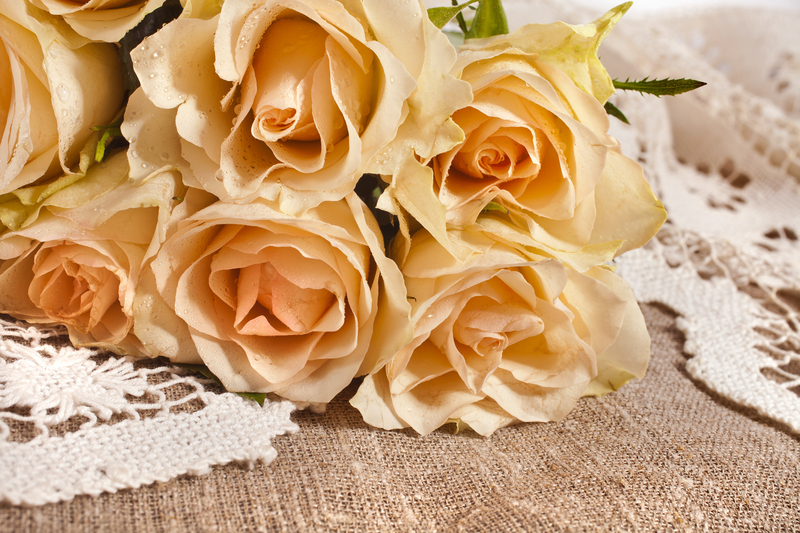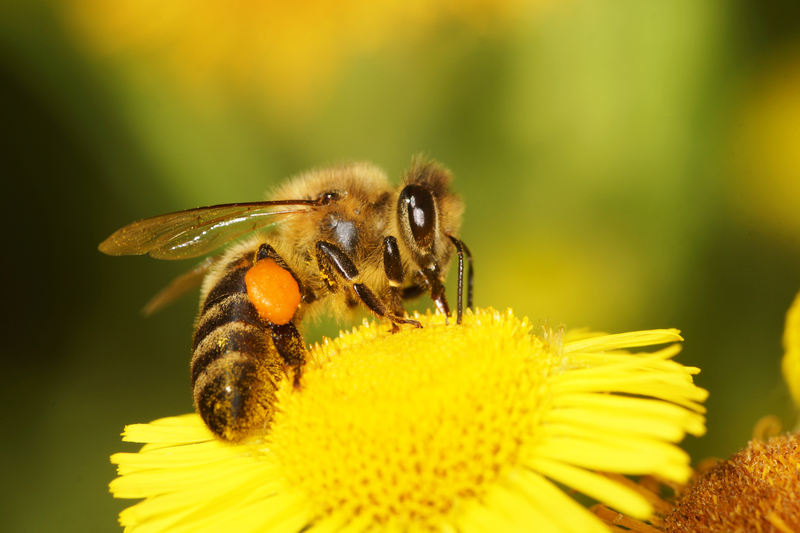Mix and Match: Combining the Best Plants for Dynamic Window Boxes
If you've ever walked past a gorgeous home with lush, overflowing window boxes, you know the transformative power these small gardens hold. Window boxes are not only a way to express your style, but also an opportunity to enhance curb appeal, grow edibles, and experiment with brilliant plant partnerships. But how do you create truly dynamic window boxes? This comprehensive guide explores how to effectively mix and match the best plants for window boxes by carefully selecting, combining, and caring for harmonious groupings all year round. Get ready to master the art of dynamic window box gardening.

Why Mix and Match in Window Boxes?
A single-species planting can look neat, but combining plants with diverse colors, textures, and growth habits creates breathtaking results. Mixing and matching plants in window boxes offers several major benefits:
- Visual Impact: Multi-layered plantings create a lush, three-dimensional effect that grabs attention.
- Seasonal Longevity: Mixing annuals, perennials, and evergreens ensures your display looks great from spring through winter.
- Biodiversity: A variety of plants supports pollinators like bees and butterflies, adding life to your outdoor space.
- Personal Expression: Combining your favorite plants is a chance to express your taste and creativity.
- Thriving Ecosystem: Different root structures and growth habits make for healthier, more resilient mini-gardens.
The Fundamentals of Dynamic Window Box Design
To create eye-catching, thriving window box combinations, you need to pay attention to a few key elements:
- Sunlight Requirements: Combine plants that require similar light conditions (full sun, partial shade, or shade).
- Growth Habits: Use a mix of upright, mounding, and trailing plants to create depth and movement.
- Color Schemes: Harmonize or contrast shades for bold or subtle effects. Consider flower color, foliage, and even stems.
- Texture: Play with leaf shapes, sizes, and surface qualities, such as glossy, velvety, or spiky leaves.
- Maintenance: Group plants with similar water and fertilizer needs to simplify care.
The 'Thriller, Filler, Spiller' Formula
A classic method for mixing and matching window box plants is the 'Thriller, Filler, Spiller' formula:
- Thrillers: Tall, dramatic plants that are the focal point.
- Fillers: Mounding plants that provide body and continuity.
- Spillers: Trailing or cascading plants that flow over the box's edge.
This simple structure ensures balanced, beautiful window boxes every time.
Choosing the Best Plants for Window Boxes
Selecting compatible plants is the foundation of a successful mixed window box. Here's a look at categories to consider and top plant options for each.
1. Annual Flowers for Window Boxes
Annuals bloom prolifically from spring to fall, offering dazzling colors. Combine these for instant dynamic window box appeal:
- Geraniums (Pelargonium): Classic upright thrillers with vibrant flowers in red, pink, and white.
- Petunias: Fragrant, trumpet-shaped flowers in almost every color--great as fillers or spillers.
- Impatiens: Perfect for shade; dense foliage and non-stop blooms.
- Calibrachoa ('Million Bells'): Petite petunia cousins, ideal as spillers; available in a rainbow of shades.
- Lantana: Tolerant of heat and drought, with small clusters of multicolored blooms.
2. Perennials for Lasting Structure
Perennials save money and effort--choose compact or clumping varieties for long-term displays:
- Heuchera (Coral Bells): Striking foliage in purple, amber, and lime hues. Superb filler for partial shade.
- Hostas: Dramatic leaves bring texture to shady window gardens.
- Lavender: Upright, fragrant, drought-tolerant; beautiful in full sun.
- Miniature Grasses: Such as blue fescue or Japanese forest grass for movement and contrast.
3. Edibles for Practical Beauty
Window boxes aren't just for flowers--many herbs and vegetables flourish and look great together. Try these:
- Basil, thyme, oregano, and parsley: Attractive leaves and readily harvested for the kitchen.
- Chard and kale: Colorful 'Bright Lights' chard and baby kale varieties are both ornamental and nutritious.
- Strawberries: Compact, with charming trailing runners and edible fruit.
4. Evergreens for Winter Interest
Create year-round dynamic combinations with evergreens:
- Boxwood or dwarf conifers: Add structure and greenery in all seasons.
- Ivy or trailing juniper: Spills gracefully over the edge, adding texture and resilience.
5. Foliage Plants for Color and Contrast
Leaves can be just as showy as blooms in a well-designed window box:
- Coleus: A 'must-have' for bold patterns in shade or sun.
- Sweet potato vine (Ipomoea batatas): Cascading chartreuse or deep purple foliage as a dramatic spiller.
- Dusty miller: Silvery, velvety leaves offset bright flowers beautifully.
Sample Dynamic Window Box Combinations
Looking for inspiration? Here are some expert mix-and-match window box recipes tailored to various lighting conditions and design styles.
Sunny Window Box Combination
- Thriller: Red geraniums
- Filler: Calibrachoa and lobelia
- Spiller: Sweet potato vine and trailing verbena
Why it works: The geraniums' height draws the eye, while contrasting purple and chartreuse foliage spill over the edge for a bold, colorful window box that thrives in full sun.
Shady Window Box Design
- Thriller: Coleus (bright, patterned varieties)
- Filler: Impatiens in pastel shades
- Spiller: English ivy and silver-leafed dichondra
This blend provides an explosion of texture and color in a low-light area.
Edible Window Box Mix
- Thriller: Swiss chard ('Bright Lights')
- Filler: Basil and parsley
- Spiller: Strawberries and thyme
Result: An attractive and practical window box with bountiful harvests right outside your kitchen.
Year-Round Evergreen Display
- Thriller: Miniature boxwood or dwarf Alberta spruce
- Filler: Heuchera and dwarf ornamental grass
- Spiller: Trailing ivy
Tip: Add seasonal touches like winter pansies or spring bulbs for extra interest.
Design Tips: How to Mix and Match Window Box Plants Effectively
- Stick to three to five plant types per box: Too many varieties can appear chaotic. Focus on harmonious plant partnerships for the most cohesive display.
- Repeat colors or plants for unity: Echo the same plant or color in several boxes or across your containers for visual flow.
- Vary heights and textures: For ultimate dynamic window box combinations, place taller plants toward the back or center, and fill forward with mounding and trailing options.
- Choose the right box size: Bigger containers allow for more elaborate combos and retain water better.
- Consider the home's exterior: Select colors and styles that enhance the house's paint and architecture.
- Rotate with the seasons: Swap seasonal annuals for year-round appeal--think tulips in spring, petunias in summer, ornamental cabbages in autumn, and evergreens in winter.
Planting and Caring for Your Dynamic Window Box
1. Preparation and Soil
- Use a high-quality potting mix with added compost or slow-release fertilizer. - Ensure good drainage; line the bottom of the box with gravel or crocks if needed.
2. Planting Arrangement
- Plant tallest 'thriller' slightly off center, toward the back (or center for boxes viewed from both sides).
- Arrange 'fillers' in the middle ground, tucking them close to thrillers.
- Place 'spillers' at the edges so they cascade down.
- Allow enough space between plants for healthy growth but pack tightly enough for instant fullness.
3. Watering and Maintenance
Window boxes dry out more quickly than in-ground plantings. Keep these care tips in mind:
- Water daily in summer: Especially in hot, sunny locations.
- Fertilize regularly: Use liquid plant food fortnightly for abundant blooms and healthy foliage.
- Deadhead spent flowers: Extend bloom time and keep boxes tidy.
- Cut back leggy plants: Regular trims keep combos compact and lush.
4. Pest and Disease Management
- Check for aphids, snails, and fungal issues weekly.
- Remove dead or diseased foliage promptly.
- If using edibles, choose organic pest control methods where possible.
Seasonal Refresh: Keeping Window Boxes Dynamic All Year
One secret to the most beautiful dynamic window boxes is to refresh them with the seasons:
- Early Spring: Plant pansies, violas, primroses, and spring bulbs for cool color.
- Late Spring to Summer: Switch to sun-loving annuals, herbs, and fillers for robust growth.
- Autumn: Try ornamental cabbages, heuchera, asters, and miniature pumpkins for fall interest.
- Winter: Combine evergreens, red-twig dogwoods, and birch branches, plus winter pansies for snowy beauty.

Common Mistakes When Mixing Window Box Plants--and How to Avoid Them
- Mixing incompatible plants: Always pair by light, water, and soil requirements. Avoid placing desert succulents with thirsty annuals.
- Overplanting or crowding: Plants need breathing room for roots and air circulation. Follow spacing guidelines and thin as needed.
- Ignoring maintenance: Regular watering, deadheading, and feeding are essential for all-season vibrancy.
- Neglecting box durability: Ensure your window box has drainage holes and is weatherproofed for your climate.
Conclusion: Unleash Your Creativity with Dynamic Window Box Combinations
Designing dynamic window box gardens by mixing the best plants is both an art and a science. With a keen eye for color, texture, and seasonal changes--and the right plant pairings--you can enjoy ever-changing, eye-catching displays for your home or apartment.
Remember to match plant needs, vary heights and habits, and refresh your boxes through the seasons. Whether you're cultivating lush flower displays, aromatic herb gardens, or bold foliage combinations, experimenting with mix and match window box plant combinations will turn any window into a masterpiece.
Ready to give it a try? Gather your favorite plants, follow the tips above, and watch your windows burst to life with dynamic color and texture--all year long.